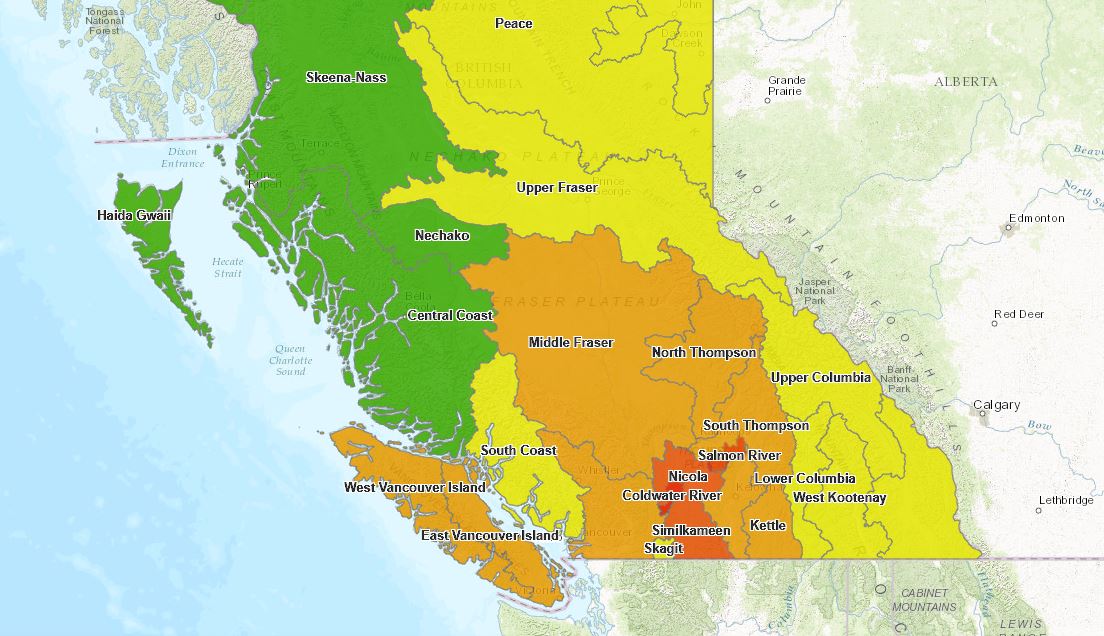On September 1st, British Columbia upgraded the Nicola, Salmon, and Similkameen river basins to Drought Level 4. These are in addition to the Coldwater river basin, which was declared drought level 4 in mid-August.
The Province is urging all surface water and groundwater users, including residents, industry, farmers and municipalities, to voluntarily reduce water consumption. A Level 4 drought rating recommends maximum reduction of water use, while a level 3 drought rating calls for reducing water use by 30 per cent.
Four river basins were upgraded to level 3 drought condition, those being the Okanagan, Lower Fraser, West Vancouver Island, and East Vancouver Island basins. These are in addition to four basins already at Drought Level 3. This brings the total number of river basins at Drought Level 3 or higher to 12.
 Map of drought levels in B.C. river basins, 2017.
Map of drought levels in B.C. river basins, 2017.
Drought Level 4 indicates probable environmental stress. The province has elevated the Similkameen, Nicola, and Salmon watersheds to Drought Level 4, because conditions are extremely dry and stream flows are approaching critical environmental low flow thresholds for fish populations, including Chinook salmon.
Last year, the East Vancouver Island basin moved to Level 4 drought condition in late June. However, level 4 conditions lasted only two weeks. In 2015, level 4 conditions began in early July and lasted through the beginning of September. In total, 2015 saw 10 river basins reach level 4 drought conditions.
 Drought levels in the province through 2015.
Drought levels in the province through 2015.
The Ministry of Forests, Lands, Natural Resource Operations and Rural Development has stated that if voluntary reductions of water use are not sufficient to maintain flows above critical levels, they may consider regulating water usage under the Water Sustainability Act. Actions under the Act could include the temporary suspension of water licences or short-term water approvals to restore flows to minimum critical levels in the impacted streams. In particular, water conservation is expected to benefit the Salmon River, where low flows are impacting migrating Chinook salmon.









